What Is a Search Suggestion Ban on Twitter?
Ejaz Ahmed
24 Jun 2025 | 6 min read

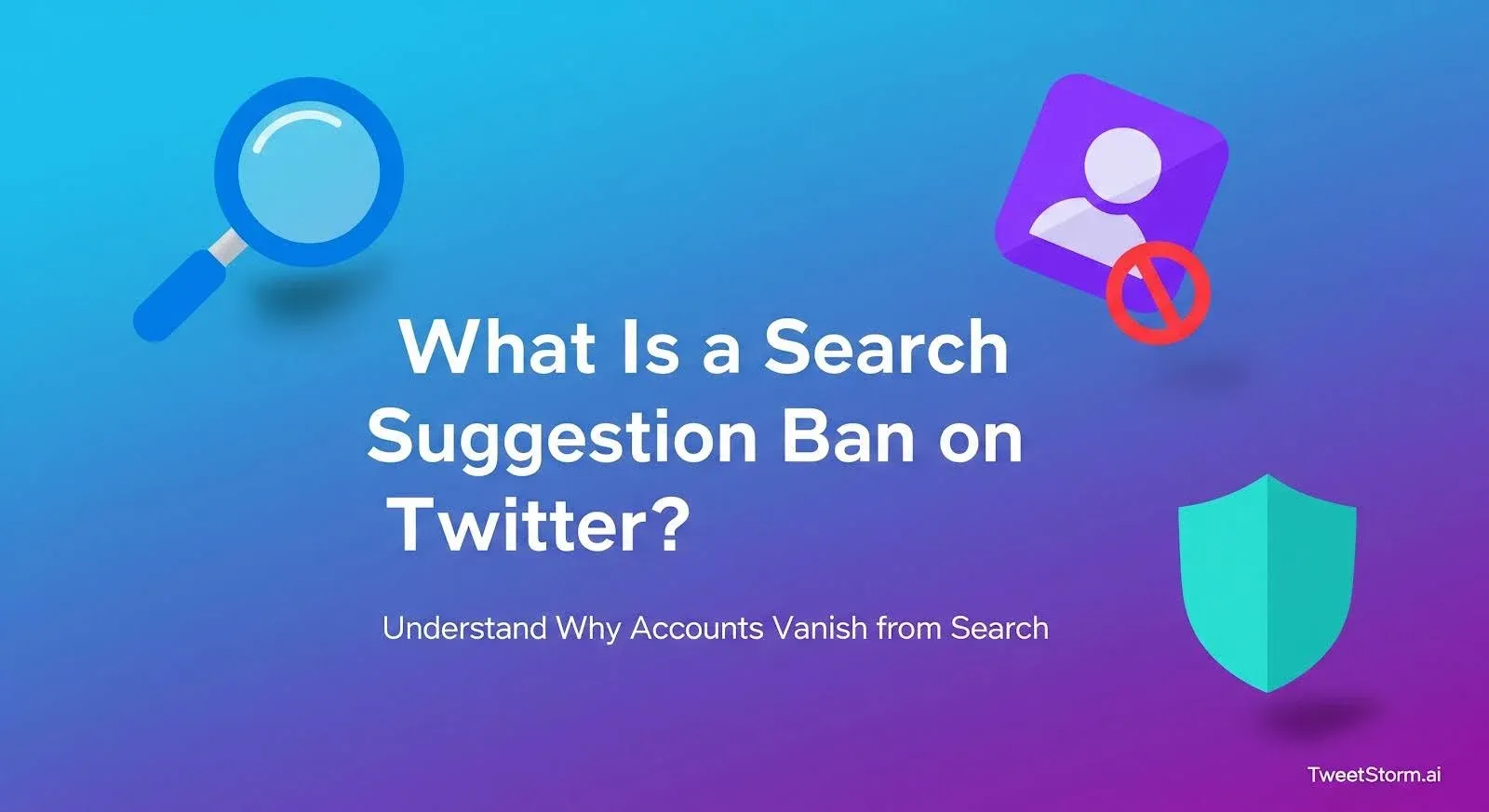
Ever feel like people just aren’t seeing your tweets anymore?
You’re posting consistently. Your content is strong. Yet suddenly, your reach plummets, mentions dry up and your profile goes dark to new audiences. If this sounds familiar, you’ve likely been hit by Twitter’s unspoken Search Suggestion Ban.
It’s one of several subtle visibility restrictions Twitter can apply without alerting you.
Why Twitter Visibility Isn’t Always What It Seems?
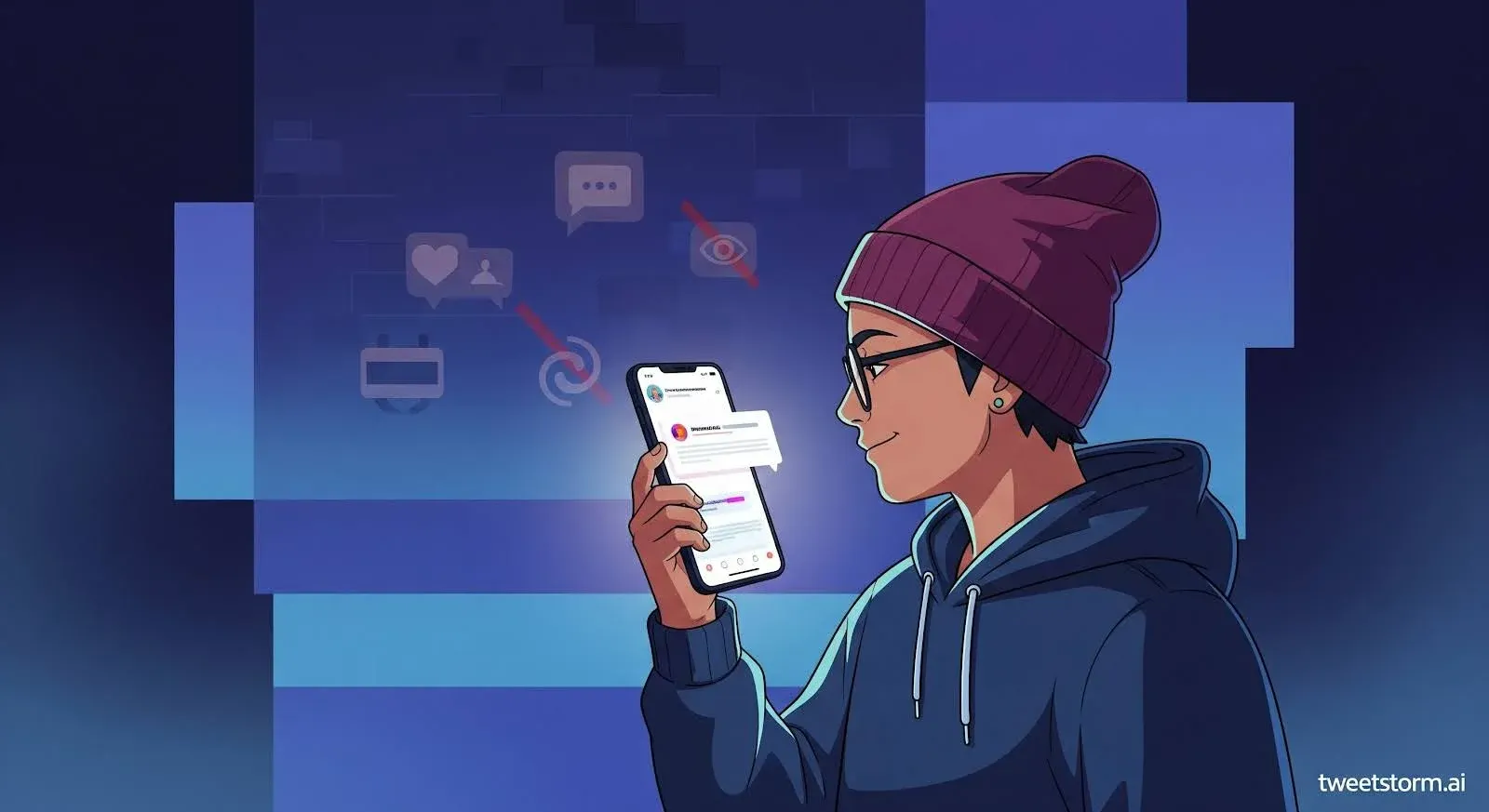
A Search Suggestion Ban on Twitter means your account won't appear in search autocomplete, even for your exact handle.
Normally, when someone types @YourName, Twitter suggests your account before they even finish typing. A search suggestion ban hides your account from search results, hindering discoverability for new followers or collaborators.
Imagine your profile being quietly unplugged from Twitter’s search grid. No error messages, just fading resonance. It’s not a ban but for creators building through organic reach? This invisible barrier is growth poison.
How Search Suggestion Ban Affects Your Account?
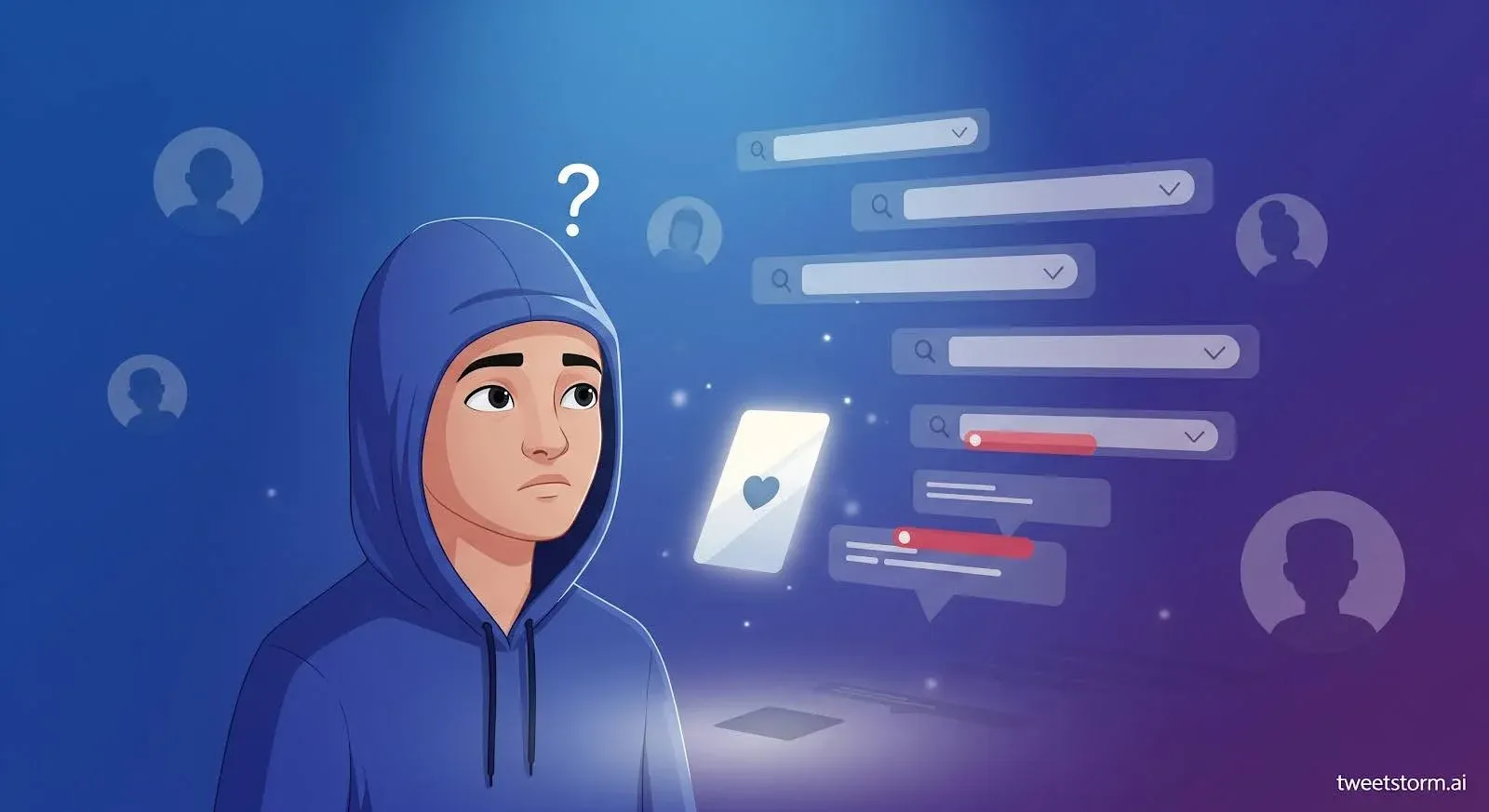
A search suggestion ban doesn’t block your content but it does make it harder for people to find you. Here’s how it works in practice:
You’re Invisible in Search Autocomplete
If someone starts typing your handle in the search bar, your profile won’t appear in the dropdown. This is especially damaging if your username isn’t easy to spell or guess.
Your Discoverability Drops
New users, followers or brands may miss your account, hindering organic growth and casual discovery.
Your Tweets Still Show but with Less Context
Your posts reach followers but new audiences can't find your profile organically. Search results exclude your name, hindering growth by forcing reliance on direct links.
What Causes a Search Suggestion Ban?
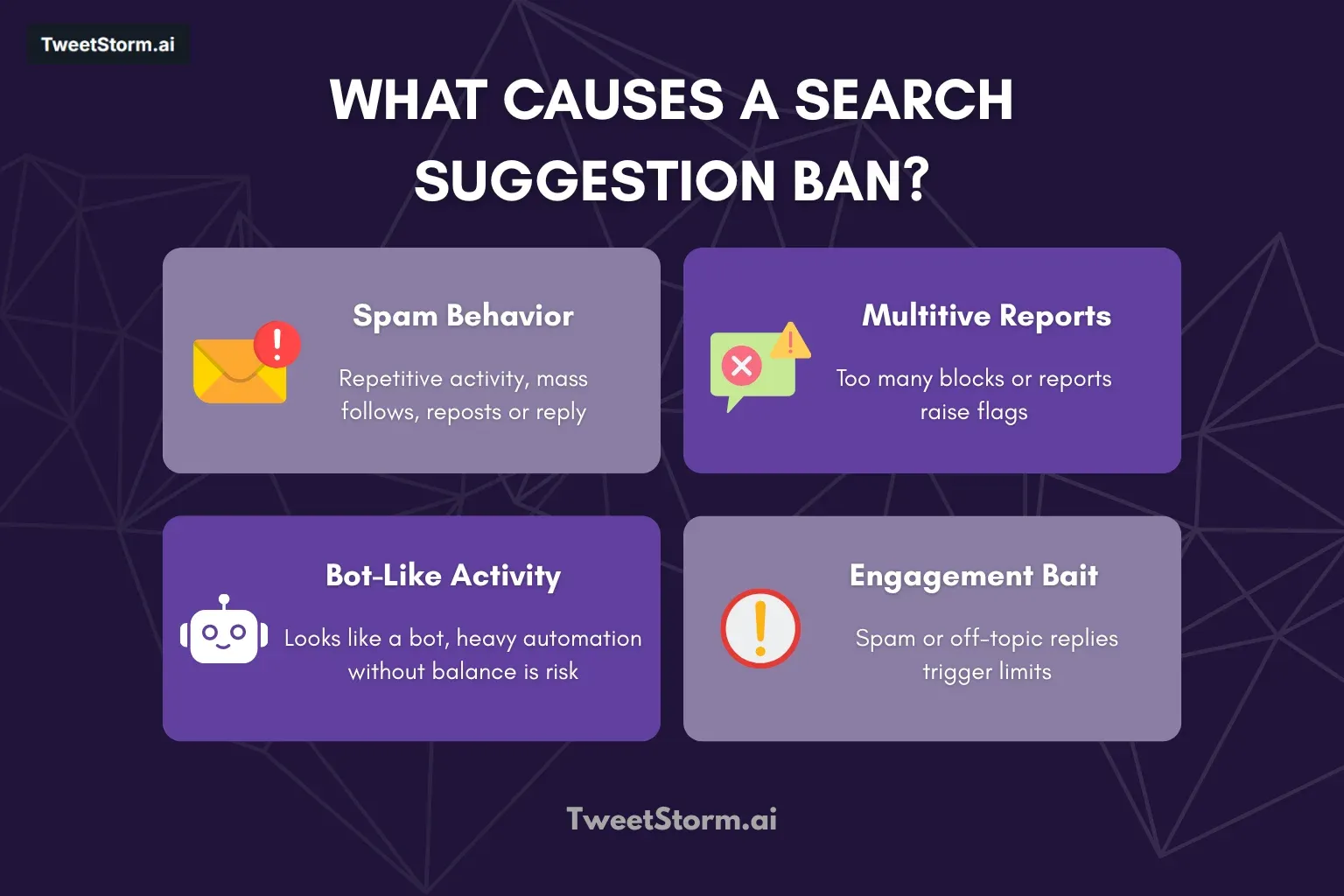
Twitter doesn't officially share rules for search suggestion bans but user reports indicate common triggers.
Here’s what can lead to this type of visibility restriction:
1. Spammy Behavior
Shotgun follows/unfollows, copy-paste replies or flooding threads with duplicate content? Twitter’s systems flag this as "low-quality engagement", even if you’re technically active.
2. Reported Tweets or Blocks
Multiple blocks/reports in short windows signal "disruptive presence" to algorithms. You might not break rules but crowd-sourced backlash can exile you from suggestions.
3. Automation Overload
Tools that mass-like, comment or post without human pacing trigger Twitter’s anti-spam radar. Aggressive rate = guaranteed suspicion.
4. Engagement Bait or Low-Quality Replies
"Great thread!" comments under big accounts? Low-effort replies to hijack visibility backfire. These get hidden and label your account as "noise."
5. Bot-Like Signals
To be clear: you don’t need to break Twitter’s rules to get hit with a search limitation. Many of these bans are algorithmic and temporary, triggered by behavior patterns, not always intent.
How to Check If You're Search Suggestion Banned?
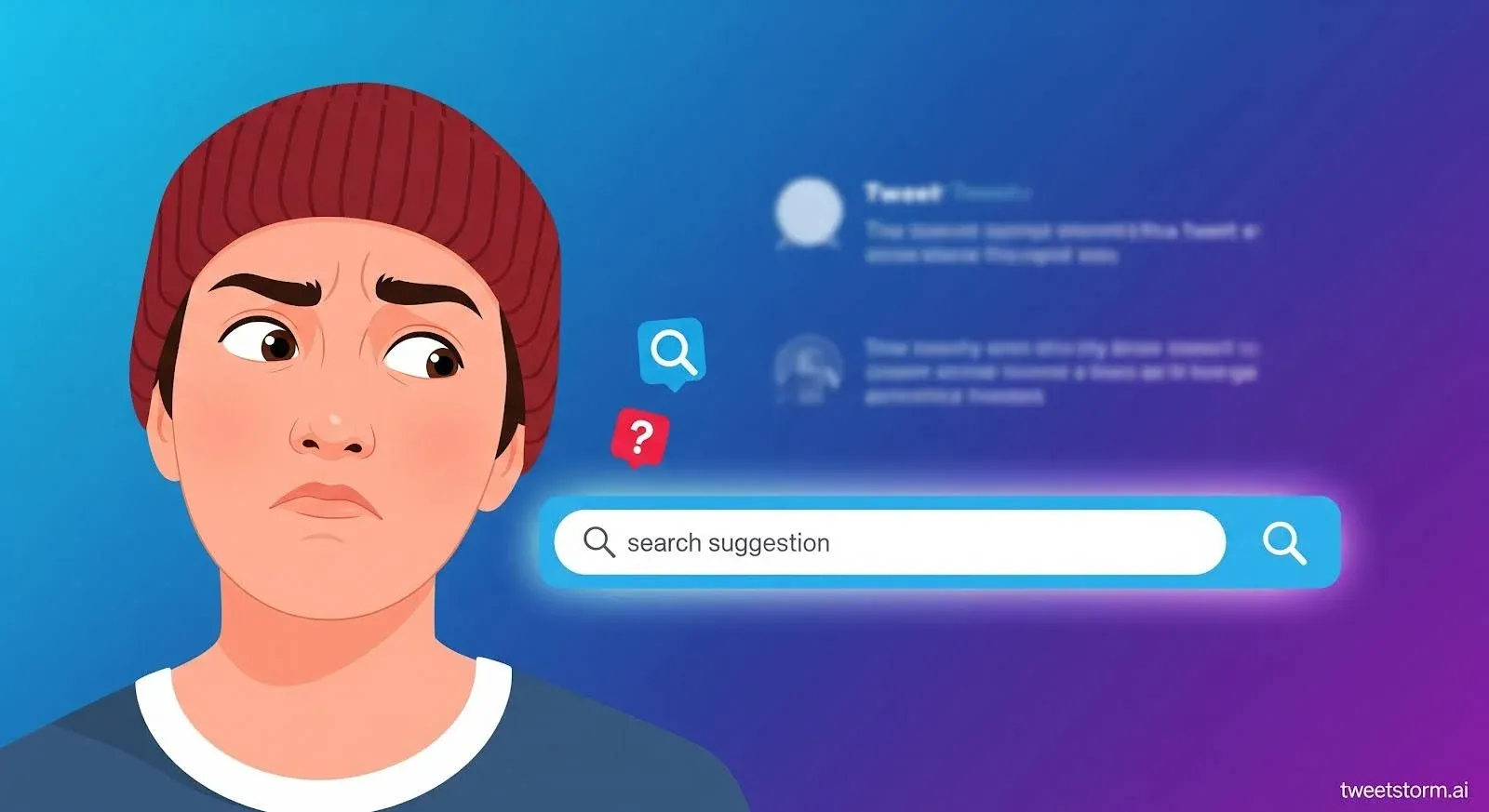
Twitter doesn't notify you of a search suggestion ban but you can check manually.
Here’s what you can do:
1. Use Incognito Mode
Log out of your account or open a private browser window. Type your handle into the Twitter search bar.If your profile doesn’t appear in the dropdown (even when typing the full username), it’s likely you’re under a suggestion ban.
2. Ask Someone Else to Search
Ask a friend or teammate who doesn’t follow you to try searching for your account. If you don’t show up for them either, it’s a clear signal.
3. Try a Third-Party Ban Checker
Sites like Shadowban.eu claim to detect search bans. While not 100% reliable, they can validate patterns if your reach suddenly flatlines.
4. Compare Search vs Direct Link
Profile accessible via direct link (twitter.com/yourhandle). Invisible in search results (even when logged out)
= Confirmed suggestion ban.
Critical nuance:
- Autocomplete varies by user history/device
- Single failed search ≠ proof
- Multiple verified failures? Act immediately.
How to Fix or Avoid Search Suggestion Ban?
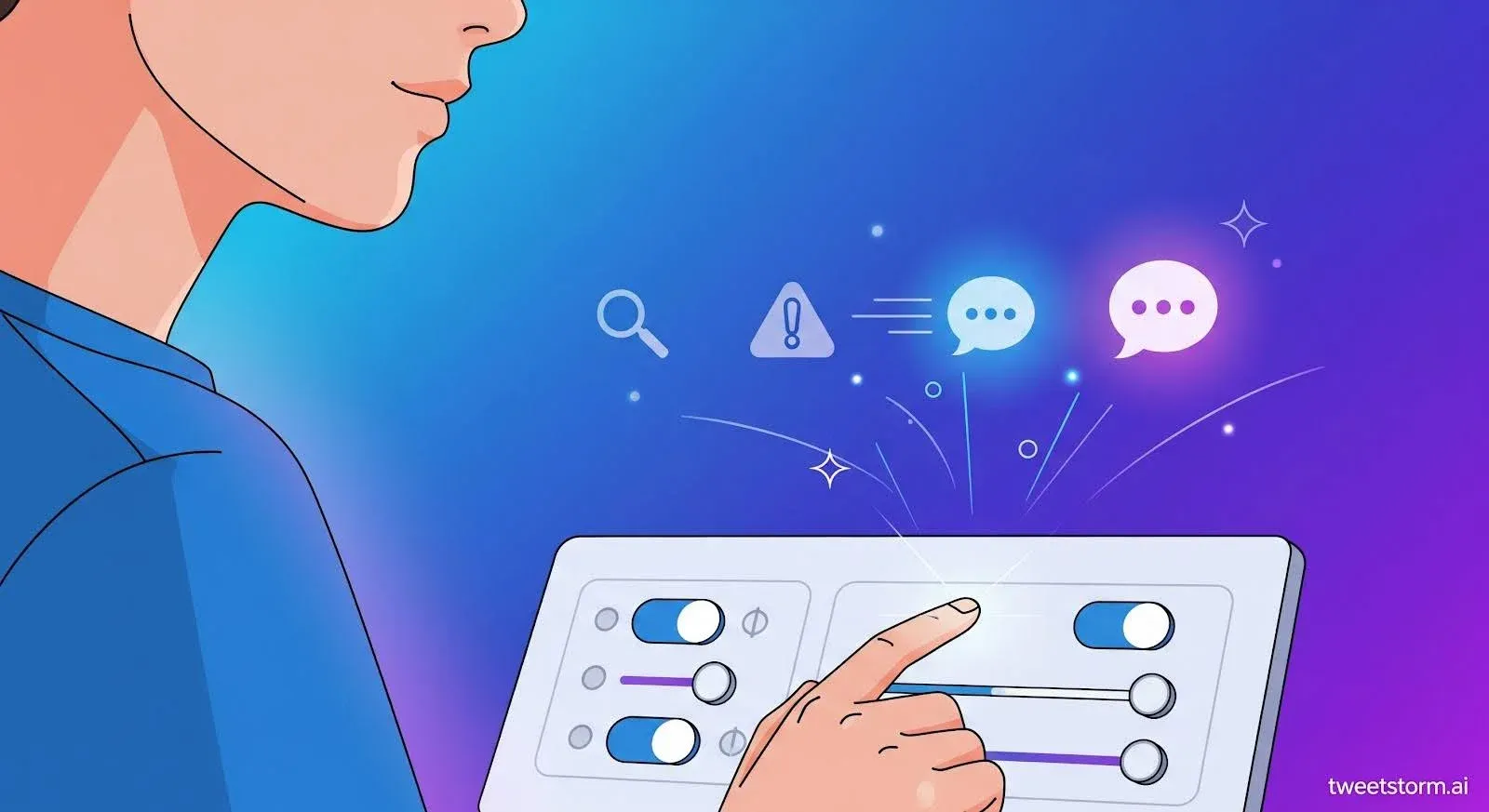
Search suggestion bans are often temporary but your visibility won’t rebound until you actively rehabilitate your account. Here’s what you can do if you think your account has been limited:
1. Scale Back Automated or Repetitive Actions
Halt all mass actions immediately, likes, follows, replies. If your tools ignore Twitter’s rate limits, disable them. Minimum 48-hour detox to reset your account’s algorithmic standing.
2. Clean Up Low-Quality Tweets
Scrub spammy replies, duplicate tweets and keyword-stuffed posts. These signal "low-quality" to algorithms.
3. Focus on Original Content
Tweet native content with a clear voice and consistent tone. Avoid overusing links, hashtags or engagement-bait formats (“like for yes, retweet for no”).
4. Avoid Bot-Like Patterns
Don’t post every 2 minutes. Mix up your tweet types. Add replies and quote tweets that show real human interaction.
5. Be Patient, It Often Reverses on Its Own
Search bans often reverse automatically within 7–14 days if you’ve halted toxic behaviors. But "waiting it out" only works if paired with sustained, authentic engagement:
- Post high-value content daily
- Engage manually (no automation)
- Avoid spam triggers
Key insight: These steps rebuild algorithmic trust, the foundation for lasting visibility.
Bonus: How TweetStorm Can Help With Discoverability
TweetStormAI boosts views through clean, original and relevant content but cannot remove search suggestion bans.

Here’s how:
1. Write Smarter, Not Spammy
TweetStormAI's AI Tweet Generator creates well-formatted, keyword-optimized tweets with the right tone, avoiding repetitive content.
2. Use Hashtags Strategically
The Hashtag Generator avoids spammy over-tagging. It recommends niche-relevant, readable tags so your tweets remain discoverable, not noisy.
3. Clean Up Old Tweets
Use TweetStorm's mass delete tool to remove low-quality content from your profile for account recovery.
4. Target the Right Keywords
Use Advanced Search to dissect high-performing tweets in your niche:
- What phrases do leaders use?
- Which hashtags drive engagement?
- How do they frame pain points?
Then craft original content that leverages these insights, without falling into spam traps.
Final Thoughts
Posting great content and following rules should guarantee visibility but Twitter’s silent search bans defy that logic. The cruelty lies in the silence: no alert, just erosion. You feel the reach vanish, the growth stall, the profile fade into algorithmic obscurity.
TweetStormAI helps you get back on track after a Twitter search ban. Our tools make posting smarter, audits quicker and engagement cleaner, so you can recover smoothly.
FAQs
1. What is a search suggestion ban on Twitter?
A Twitter search suggestion ban means a profile won't appear in autocomplete, even with the exact handle.
2. Can people still find me if I am search suggestion banned?
Yes, if they search manually or use a direct link to your profile. But casual discoverability drops significantly.
3. Do I get notified if I’m banned from search suggestions?
No. Twitter doesn’t notify users or provide any visibility into search bans.
4. How do I know if I am search suggestion banned?
Try searching your handle in an incognito browser or ask someone else to do it. If you don’t appear in the dropdown, it’s a strong sign.
5. What causes a search suggestion ban?
Common triggers include spammy behavior, mass following, reported tweets, low-quality replies or bot-like posting patterns.
6. Is a search suggestion ban the same as a shadowban?
No. A shadowban can hide your replies and tweets across the platform. A search suggestion ban only limits visibility in search autocomplete.
7. How long does a search suggestion ban last?
There’s no fixed duration. It can lift in a few days if your behavior changes but some bans last weeks depending on activity.
8. Will TweetStorm detect if I’m banned?
No, TweetStorm doesn’t detect bans. But it helps prevent them by encouraging clean, high-quality content and offering tools to clean up your account.
9. Can using TweetStorm’s tools get me banned?
No, if used responsibly. TweetStorm respects platform limits and doesn’t engage in spammy automation. It's designed for smart, controlled usage.